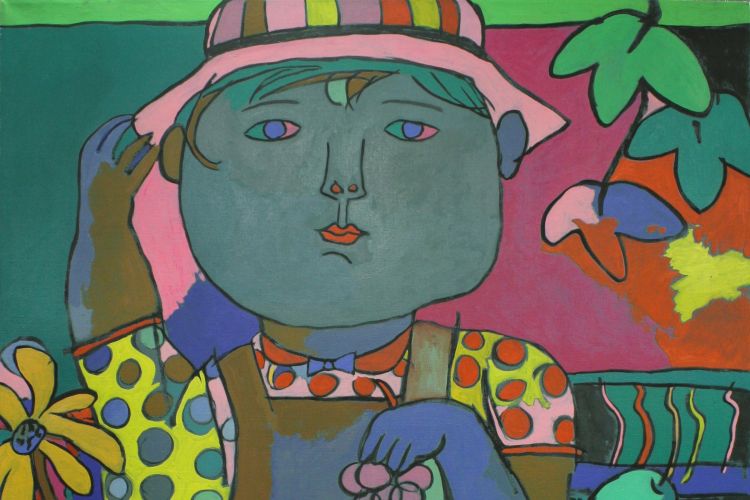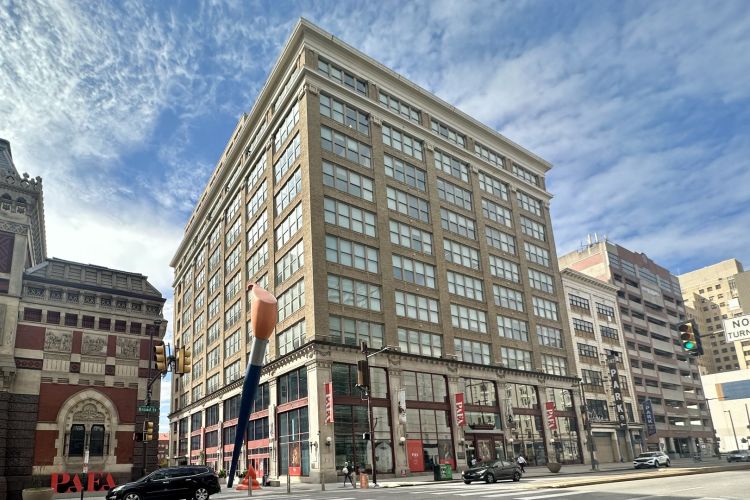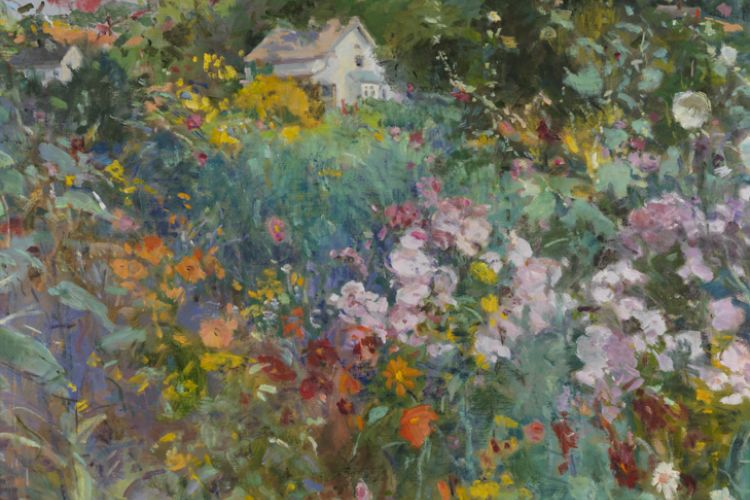PAFA Presents Subversion and Surrealism in the Art of Honoré Sharrer
PAFA Presents
Subversion and Surrealism in the Art of Honoré Sharrer
June 29 – September 3, 2017
Press Preview: Wednesday, June 28, 11 a.m.
PHILADELPHIA (April 3, 2017) – The Pennsylvania Academy of the Fine Arts (PAFA) is pleased to present Subversion and Surrealism in the Art of Honoré Sharrer, the first critical reassessment of an artist who, despite a meteoric rise in the 1940s and 1950s, has receded from the public eye. The exhibition is on view June 29 – September 3, 2017 at PAFA, 128 North Broad Street, Philadelphia.
Subversion and Surrealism comprises approximately 45 paintings along with dozens of associated drawings, sketches, photographs, and prints from major public and private collections. The exhibition marks the first time a number of the works have been on public view.
"The exhibition is a timely re-evaluation of an artist who pushed the boundaries of figurative painting with playfulness and biting wit,” said David R. Brigham, PAFA President, CEO and Acting Museum Director. “Subversion and Surrealism, and its accompanying scholarly catalog, provide a comprehensive examination of Sharrer’s place in American art and reveal the full scope of her significant achievements.”
Honoré Desmond Sharrer (1920–2009) was a leftist, female figurative painter in an era when anti-Communist sentiment and the male-dominated Abstract Expressionism and Pop Art movements dominated American culture. Sharrer’s brightly colored, humorous, and distinctly feminine paintings combine elements of social realism and surrealism to seductive and disquieting effect.
She was a major art world figure in the years surrounding World War II, though her commitment to leftist ideals and an alternate trajectory of surrealism put her at increasing odds with the political and artistic climate of the 1950s.
Drawing on the more recent critical attention to these immediate post-war years and, importantly, to the decades following, this exhibition examines Sharrer’s work as an important bridge between earlier practices of surrealism and its motifs, and the processes and concerns more closely associated with the Pop artists.
“Sharrer’s paintings bring Elvis Presley’s mother, Marcel Proust, pin-up girls, Joseph McCarthy, Fragonard, and a Mother Goose who overflies a gaggle of bikers into a visual dialogue that probes with acerbic acumen the underbelly of the conventions that form her subject,” said site curator Jodi Throckmorton, PAFA’s Curator of Contemporary Art.
Sharrer’s rise in the American art world was extraordinary: At 18, she won a national youth art award; at 19, she was the youngest artist included in the Golden Gate Exposition; and by age 24 the critic Lincoln Kirstein had donated Sharrer’s Workers and Paintings to the Museum of Modern Art in New York. Sharrer was included in MoMA’s 14 Americans (1946), the Metropolitan Museum of Art’s Nineteen Young Americans (1950), Kirstein’s watershed Symbolic Realism in American Painting (1950), and the Whitney Museum of American Art’s The New Decade: 35 American Painters and Sculptors (1955).
Her work also garnered broad national attention: In 1949, Mademoiselle magazine selected her as “Woman Artist of the Year,” and in 1951 she was picked up by M. Knoedler & Co. with a solo exhibition of only one work, her polyptych Tribute to the American Working People (1946-51, Smithsonian American Art Museum), which garnered a flurry of national media attention.
Sharrer’s early work is grounded in the documentary observation and leftist critique of Social Realism. A vocal “fellow traveler” of the American Communist Party, Sharrer found that she, like many of her colleagues, was progressively marginalized by Cold War constraints on political dissent and the overtly masculine aesthetics of Abstract Expressionism.
She responded to these exclusionary dynamics by developing a strategy of visual subversion that, ironically, enabled her to voice an even more pointed and complex dissent than found in her early work. Her strategy was grounded in the ambiguity of surrealism to enact an unsettling interplay between seduction and subversion.
Sharrer’s use of mass and popular visual culture situates her as a link between the socially-engaged art of the 1940s, through the political suppression of the 1950s, to the more ironic commentary of Pop Art.
Early on, Sharrer used photography in a fairly straightforward, though nearly obsessive, documentary system in the manner of the Farm Security Administration photographers she admired. Her use of source material developed into a complex visual archive—an extensive system of thematic folders of study photographs, Associated Press images, magazine ads, local newspaper snapshots of business conventions and other banal events, interspersed with sensational news images from national magazines such as Paris Match and Time, and reproductions of paintings.
The visual and conceptual conflation of Sharrer’s archives ties her particular method of surrealist non sequitur and juxtaposition to the barrage of advertisements, horrific news clips, society gossip, and other ubiquitous material culture and social convention that provided fodder for Pop Art.
Subversion and Surrealism in the Art of Honoré Sharrer is accompanied by a fully illustrated, scholarly catalogue published by Yale University Press. The catalogue includes an introduction written by Sharrer’s son, Adam Zagorin, former senior correspondent for Time and current investigative journalist for a nonprofit government oversight organization.
The exhibition’s organizing curators are Robert Cozzolino, formerly of PAFA and currently Patrick and Aimee Butler Curator of Paintings at the Minneapolis Institute of Art, and Melissa Wolfe, Curator of American Art at the Saint Louis Art Museum.
Previously on view at Columbus Museum of Art, PAFA’s co-organizer of the exhibition, Subversion and Surrealism will travel to Smith College Museum of Art in Northampton, Mass., and will be on view September 21, 2017 – January 7, 2018.
A special ticketed preview party and reception for Subversion and Surrealism will be held on the evening of June 28.
###
About PAFA
Founded in 1805, the Pennsylvania Academy of the Fine Arts (PAFA) is America's first school of fine arts and museum. A recipient of the 2005 National Medal of Arts, PAFA is a recognized leader in fine arts education with a world-class permanent collection of American art.
We're so excited you're planning to visit PAFA!
Make time for art — visit us Thursday to Sunday.
Before reserving your tickets, please review helpful information about museum hours, accessibility, building access, and special admission programs.
If you have any questions, feel free to reach out to us at visitorservices@pafa.org — we’d love to help!



